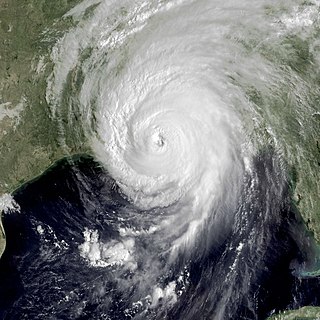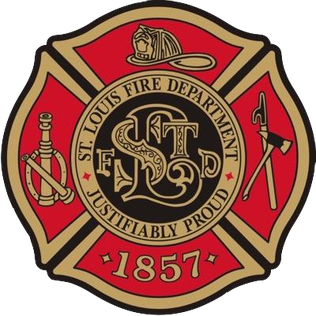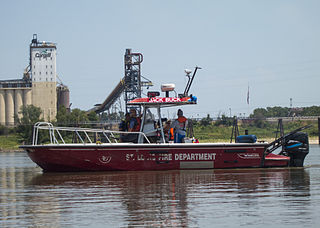
Gulfport is the second-most populous city in the U.S. state of Mississippi after the state capital, Jackson. Along with Biloxi, Gulfport is the co-county seat of Harrison County and part of the Gulfport–Biloxi metropolitan area. As of the 2020 census, Gulfport has a population of 72,926; the metro area has a population of 416,259. Gulfport lies along the gulf coast of the United States in southern Mississippi, taking its name from its port on the Gulf Coast on the Mississippi Sound. It is home to the U.S. Navy Atlantic Fleet Seabees.

A coast guard or coastguard is a maritime security organization of a particular country. The term embraces wide range of responsibilities in different countries, from being a heavily armed military force with customs and security duties to being a volunteer organization tasked with search and rescue without law enforcement authority. In most countries, a typical coast guard's functions are distinct from those of the navy and the transit police, while in certain countries they have similarities to both.

Sultana was a commercial side-wheel steamboat which exploded and sank on the Mississippi River on April 27, 1865, killing 1,167 people in what remains the worst maritime disaster in United States history.

A fireboat or fire-float is a specialized watercraft with pumps and nozzles designed for fighting shoreline and shipboard fires. The first fireboats, dating to the late 18th century, were tugboats, retrofitted with firefighting equipment. Older designs derived from tugboats and modern fireboats more closely resembling seafaring ships can both be found in service today. Some departments would give their multi-purpose craft the title of "fireboat" also.

An inland port is a port on an inland waterway, such as a river, lake, or canal, which may or may not be connected to the sea. The term "inland port" is also used to refer to a dry port.

NY Waterway, or New York Waterway, is a private transportation company running ferry and bus service in the Port of New York and New Jersey and in the Hudson Valley. The company utilizes public-private partnership with agencies such as the Port Authority of New York and New Jersey, New Jersey Transit, New York City Department of Transportation, and Metropolitan Transportation Authority to provide service and maintain docking facilities.

Hurricane Katrina's winds and storm surge reached the Mississippi coastline on the morning of August 29, 2005. beginning a two-day path of destruction through central Mississippi; by 10 a.m. CDT on August 29, 2005, the eye of Katrina began traveling up the entire state, only slowing from hurricane-force winds at Meridian near 7 p.m. and entering Tennessee as a tropical storm. Many coastal towns of Mississippi had already been obliterated, in a single night. Hurricane-force winds reached coastal Mississippi by 2 a.m. and lasted over 17 hours, spawning 11 tornadoes and a 28-foot (8.5 m) storm surge flooding 6–12 miles (9.7–19.3 km) inland. Many, unable to evacuate, survived by climbing to attics or rooftops, or swimming to higher buildings and trees. The worst property damage from Katrina occurred in coastal Mississippi, where all towns flooded over 90% in hours, and waves destroyed many historic buildings, with others gutted to the 3rd story. Afterward, 238 people died in Mississippi, and all counties in Mississippi were declared disaster areas, 49 for full federal assistance. Regulations were changed later for emergency centers and casinos. The emergency command centers were moved higher because all 3 coastal centers flooded at 30 ft (9.1 m) above sea level. Casinos were allowed on land rather than limited to floating casino barges as in 2005.

The Port of New York and New Jersey is the port district of the New York-Newark metropolitan area, encompassing the region within approximately a 25-mile (40 km) radius of the Statue of Liberty National Monument.
The United States Coast Guard is the coastal defense, search and rescue, and maritime law enforcement branch of the United States Armed Forces and is one of the country's eight uniformed services. It carries out three basic roles, which are further subdivided into eleven statutory missions. The three roles are:

The Nigerian Navy (NN) is the naval force of the Federal Republic of Nigeria. It is a branch of the Nigerian Armed Forces. With 75 warships, it is categorised as the fifth strongest navy in Africa. It is considered well-trained and has participated in several peacekeeping missions.

The Great Loop is a system of waterways that encompasses the eastern portion of the United States and part of Canada. It is made up of both natural and man-made waterways, including the Atlantic and Gulf Intracoastal Waterways, the Great Lakes, the Erie Canal, and the Mississippi and Tennessee-Tombigbee Waterway. The entire loop stretches about 6,000 miles (9,700 km).

The Port of Albany–Rensselaer, widely known as the Port of Albany, is a port of entry in the United States with facilities on both sides of the Hudson River in Albany and Rensselaer, New York. Private and public port facilities have existed in both cities since the 17th century, with an increase in shipping after the Albany Basin and Erie Canal were built with public funds in 1825.

The St. Louis Fire Department provides emergency medical services, fire cause determination, fire prevention, fire suppression, hazardous materials mitigation, and rescue services to the city of St. Louis, Missouri. The department is also the second oldest professional and fully paid fire department in the United States. The STLFD is responsible for 69.0 square miles (179 km2) and has a population of approximately 294,890 with a daytime population of over 2 million.
As an important river port, there has been six fireboats operated by the Detroit Fire Department.

The Christopher Wheatley is a fireboat delivered to the Chicago Fire Department in 2011. When she was delivered in April 2011, she was the first new fireboat to serve the city in sixty years. She replaced the Victor L. Schlaeger.
Margaret Norvell (1860-1934) was a lighthouse keeper, employed by the United States Lighthouse Service, a precursor agency to the United States Coast Guard. Norvell became a lighthouse keeper in 1891, and remained in that service for 41 years. Widows whose husbands were lighthouse keepers, who died in office, were allowed to hold positions as lighthouse keepers themselves. Norvell's husband drowned in the course of his duties. Norvell was credited with saving many lives, including by venturing out into storms in a rowboat to rescue stranded mariners.

The Stan Musial is a fireboat stationed in the Port of St. Louis in Missouri. Commissioned in September 2013, she is named after Stan Musial, a St. Louis sports figure, with a long association with the St. Louis Cardinals baseball team. The 44-foot (13 m) craft has the ability to pump 7,000 US gallons per minute (26,000 L/min) from its water cannon and can travel at up to 38 knots (44 mph). She was placed into service on October 30, 2013.

The Jack Buck is a fireboat operated by the St. Louis Fire Department in St. Louis, Missouri.
Because water transport is an important industry on the rivers of the Mississippi River system, there are a number of fireboats on the Mississippi River system.















